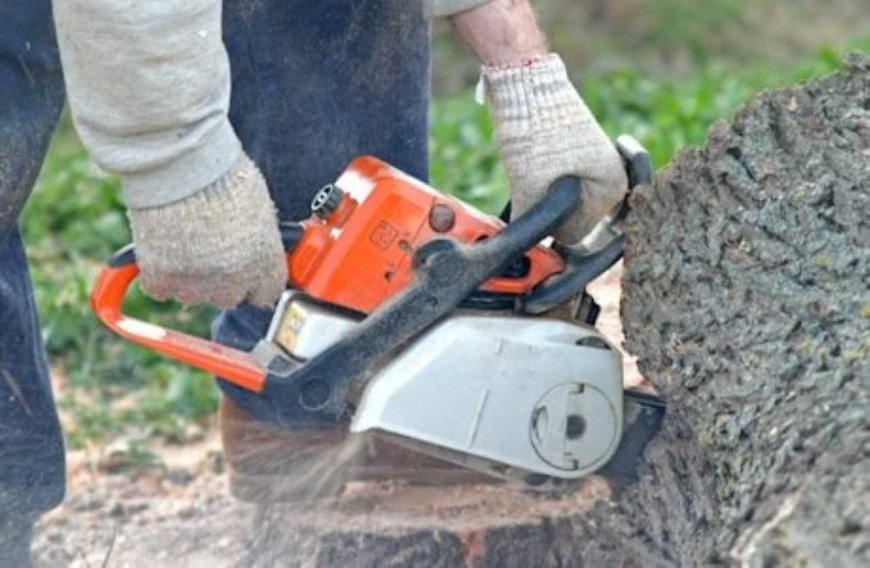Tree Pruning: The Complete Guide to Healthier, Safer, and Better-Looking Trees
Tree pruning isn’t just about making your yard look nice—it’s about keeping your trees safe, healthy, and strong for years to come. Whether you're tackling a few low branches yourself or hiring a pro to handle the big stuff, regular pruning is a smart investment in your landscape. Just remember: a little trim today can prevent a big problem tomorrow.

Tree pruning might seem like simple snipping, but its one of the most important things you can do for your trees. Whether you're boosting curb appeal, keeping branches away from your roof, or just making sure your trees grow strong and healthy, pruning plays a huge role.
This guide walks you through everything you need to knowwhy its important, how to do it, and when to call in the pros.
Benefits of Tree Pruning
Improves Tree Health
Removing dead, diseased, or insect-infested branches helps stop decay and boosts the overall health of the tree.
Enhances Appearance
Pruned trees look cleaner, more balanced, and more beautiful. They frame your property better and can even raise your homes value.
Encourages Fruit and Flower Production
Pruning stimulates new growth, which can lead to more blossoms and better fruit yields in orchard trees.
Increases Safety
Overhanging limbs or weak branches are major hazards. Pruning reduces the risk of falling branches that can injure people or damage property.
Prevents Property Damage
Branches scraping against your roof, driveway, or fence? Pruning prevents expensive repairs.
Types of Tree Pruning
Crown Cleaning
The most basic typeremoving dead, dying, or diseased branches.
Crown Thinning
Selective removal of branches to increase light penetration and air flow through the crown.
Crown Raising
Lifting the bottom branches to clear space for walkways, vehicles, or views.
Crown Reduction
Reducing the overall size of the tree canopy while maintaining its natural shape.
Deadwooding
Specifically removing dead branches that could fall at any time.
Structural Pruning
Focuses on improving the trees strength by guiding growth and eliminating weak junctions early.
Best Time to Prune Trees
Seasonal Timing by Tree Type
-
Winter (Dormant Pruning): Ideal for most deciduous treespromotes vigorous spring growth.
-
Spring/Summer: Best for flowering trees after blooming.
-
Fall: Usually avoided due to slower healing and higher disease risk.
Signs Your Tree Needs Pruning
-
Cracked or broken limbs
-
Overgrown branches rubbing against each other
-
Dead or hanging limbs
-
Branches too close to structures or power lines
How to Prune a Tree Properly
Tools Youll Need
-
Hand pruners (for small branches)
-
Loppers (for medium branches)
-
Pruning saws or chainsaws (for large limbs)
-
Gloves, goggles, hard hat
Safety First
Never prune near power lines. Always wear safety gear and follow tool instructions.
Step-by-Step Process
-
Start with dead or diseased branches
-
Make cuts at the branch collar (dont leave stubs)
-
Thin out crowded areas
-
Maintain the natural shape of the tree
Tree Pruning Mistakes to Avoid
Topping
Chopping the top off a tree is extremely damagingit invites decay and ruins the shape.
Over-pruning
Removing too much foliage weakens the tree. Dont remove more than 25% of a trees canopy at once.
Improper Cuts
Cutting too close or too far from the trunk can damage the tree. Aim for clean, angled cuts just outside the branch collar.
DIY vs. Professional Tree Pruning
What You Can Do Yourself
Light pruning of small trees, shrubs, or low-hanging branches is fine with the right tools.
When to Call a Certified Arborist
-
Pruning tall trees
-
Dealing with disease
-
Near structures or utilities
-
Needing structural guidance for young trees
Pruning for Tree Health and Disease Control
Removing Infected Limbs
Early pruning can stop diseases like oak wilt, blight, or cankers from spreading.
Promoting Air Circulation
Thinning helps reduce moisture and fungal growthespecially important in humid areas.
Encouraging Strong Growth Patterns
Directs energy to healthy branches and prevents future structural issues.
Tree Pruning and Wildlife
Protecting Nests and Habitats
Avoid pruning during nesting season (typically spring) to protect birds and other animals.
Pruning Around Bird Seasons
If possible, schedule pruning in late winter before wildlife becomes active.
Tools for Tree Pruning
Hand Pruners and Loppers
Best for cutting branches under 1.5 inches thick.
Pole Saws and Pruning Saws
Great for mid-sized branches and hard-to-reach spots.
Chainsaws and Safety Equipment
Only for experienced users or professionalsespecially for large trees.
Legal and Environmental Considerations
Local Pruning Laws
Some cities and HOAs have rules on when and how trees can be pruned.
Pruning Protected Trees
In some regions, protected or heritage trees require permits before any cutting.
Tree Species and Their Pruning Needs
Deciduous Trees
Prune when dormant. Most benefit from shaping and deadwood removal.
Evergreens
Minimal pruning needed. Avoid heavy cutsthey dont recover well.
Fruit Trees
Annual pruning increases yields and shapes the tree for easy harvesting.
Flowering Trees
Timing depends on bloom cyclespring bloomers get pruned after flowering.
Conclusion
Tree pruning isnt just about making your yard look niceits about keeping your trees safe, healthy, and strong for years to come. Whether you're tackling a few low branches yourself or hiring a pro to handle the big stuff, regular pruning is a smart investment in your landscape. Just remember: a little trim today can prevent a big problem tomorrow.
FAQs
1. How often should trees be pruned?
Most trees should be pruned every 13 years depending on species, age, and location.
2. Is it okay to prune in summer?
Light pruning is okay, but heavy cuts are better saved for the dormant season.
3. Whats the difference between trimming and pruning?
Trimming is usually for looks (shrubs, hedges). Pruning is for health and structure (trees).
4. Can pruning kill a tree?
Yesover-pruning or improper cuts can severely stress or even kill a tree.
5. How much of a tree can be pruned at once?
Dont remove more than 25% of a trees canopy during a single pruning session.








































